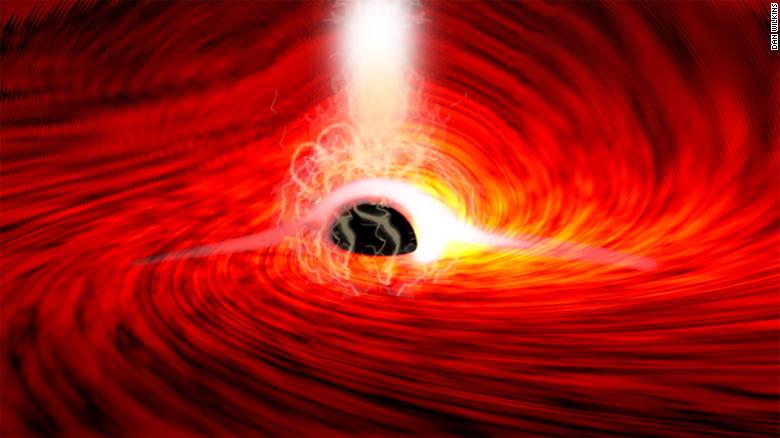For the first time, scientists have detected light from behind a black hole, and it fulfills a prediction rooted in Albert Einstein’s theory of general relativity.
Stanford University astrophysicist Dan Wilkins and his colleagues observed X-rays that were released by a supermassive black hole located at the center of a galaxy that is 800 million light-years from Earth.
These bright light flares are not unusual because although light can’t escape a black hole, the enormous gravity around it can heat up material to millions of degrees. This can release radio waves and X-rays. Sometimes, this super-heated material is hurled out into space by rapid jets — including X-rays and gamma rays.

But Wilkins noticed smaller flashes of X-rays that occurred later and were different colors — and they were coming from the far side of the black hole.
“Any light that goes into that black hole doesn’t come out, so we shouldn’t be able to see anything that’s behind it” said Wilkins, study author and research scientist at the Kavli Institute for Particle Astrophysics and Cosmology at Stanford University and SLAC National Accelerator Laboratory, in a statement.
However, the black hole’s strange nature actually made the observation possible.
“The reason we can see that is because that black hole is warping space, bending light and twisting magnetic fields around itself,” he said.
“Fifty years ago, when astrophysicists starting speculating about how the magnetic field might behave close to a black hole, they had no idea that one day we might have the techniques to observe this directly and see Einstein’s general theory of relativity in action,” said Roger Blandford, study coauthor and the Luke Blossom Professor in the School of Humanities and Sciences and professor of physics at Stanford University, in a statement.Einstein’s theory, or the idea that gravity is matter warping space-time, has persisted for a hundred years as new astronomical discoveries have been made.
Some have a corona, or a ring of bright light that forms around as material falls into it and becomes heated to extreme temperatures. This X-ray light is one way scientists can study and map black holes.
Source: CNN








